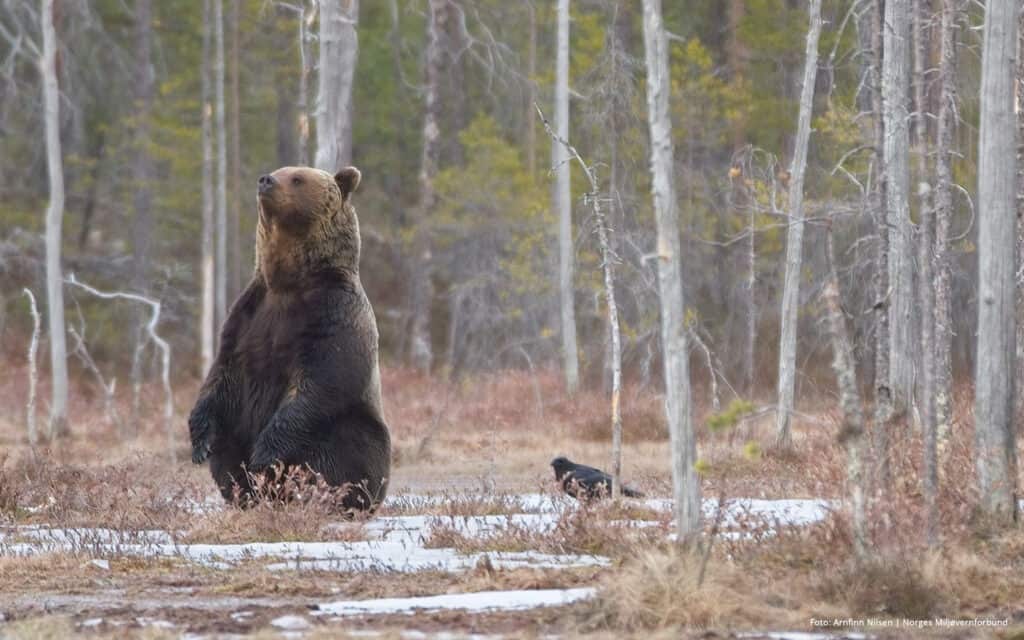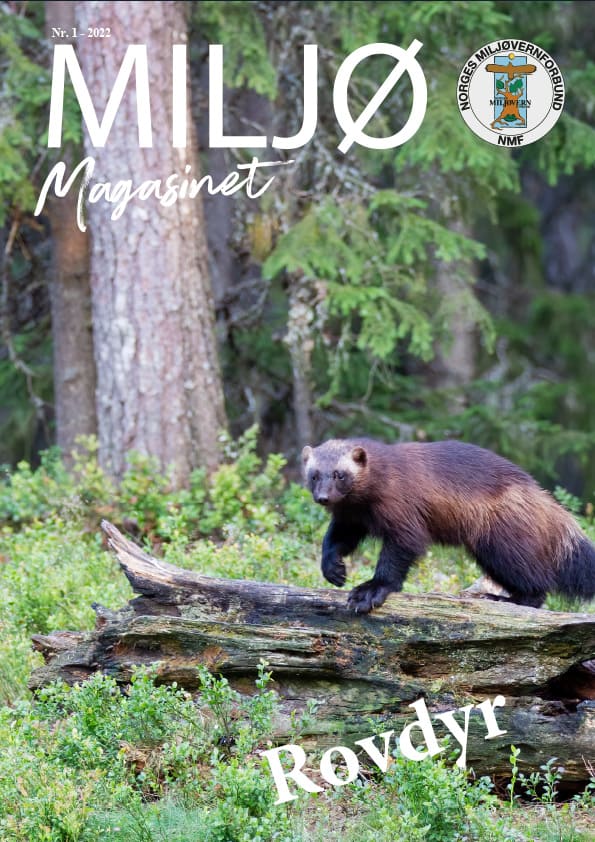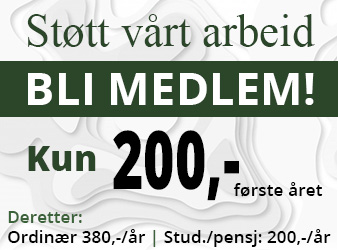Norway's predators are struggling. Today, predators are regulated according to population targets set by the Storting. Unfortunately these stock targets are far from a basis for viable stocks. There has now been a representative proposal in the Storting to further lower these population targets. At the same time, we have a Minister of Food and Agriculture who is eager to shoot all the wolves in Norway. In any case, this is a clear breach of Norway's obligations according to Bern Convention.
IN In Norway, we are so lucky that we have predators. Besides the wolf, which was almost extinct in the 60s and 70s, we have always had predators in the forests and mountains. However, in small numbers. Our predators have survived as a result of immigrating animals from Sweden, Finland and Russia. The wolf has returned despite extensive unplanned hunting and poaching. The Norwegian authorities have committed themselves to look after the predators through the Bern Convention, the Natural Diversity Act and parliamentary settlement. This means that we must have viable populations of our predators.
Now work is being done in several teams to lower the population targets, reduce the populations, for wolves and bears. The argument is the consideration of, among other things, the 2 million sheep on open field grazing. The Danish Environmental Protection Association (NMF) and the undersigned were the ones who proposed zone management between predators and grazing animals at the beginning of 2000.
Yes, all predators takes sheep despite this zone management. But, in 2021 there was "only" approx. 15,000 sheep that were replaced for having been taken by predators. In the same year, it disappeared approx. 85,000 sheep on open field pasture. These disappeared without predators being involved. It seems strange to the Environmental Protection Association that such losses (annual losses of approx. 100,000 sheep) are not discussed loudly among politicians and bureaucrats. Why? Why is nothing being done to reduce these losses? Why are these animal diseases overshadowed by predators?

The wolf
Most of the wolves in Norway is to some extent inbred. This of course does not apply to the immigrating animals from Finland and Russia. Based on the factual basis for the predatory game board's treatment and decision in the case of hunting in the wolf zone, an inbreeding gradient has been stated for each territory-marking pair and breeding packs in 2020/2021. With the aim of strengthening the wolf population for the future, it is important that you remove the most inbred packs if you see yourself having to shoot packs in order to stick to the population target according to The Storting's settlement. You don't breed for bad genes. The predatory authorities had made a selection of wolf tusks, which could be a start on this work to strengthen the wolf population through hunting.
With a background in the inbreeding coefficient for the various selected flocks, however, the NMF could not accept that the Rømskog flock should be shot down during the winter's license hunt. The herd has a relatively low inbreeding coefficient and does not represent a burden on livestock in the region. In recent years, the herd has had its inbreeding reduced after 2nd and 3rd generation immigrants have multiplied in the herd.
Should one reduce the population of wolves within the wolf zone, it is extremely important that the most inbred wolves are taken out over time by license hunting. The population is then strengthened by such a strategy. However, the Minister for Climate and the Environment chose to go for the felling of this herd.
The Swedish Environmental Protection Agency can only accept strategically conditional felling of wolves within the wolf zone. Any future license hunting within the wolf zone must be based on the pack's inbreeding coefficient.

Through bureaucracy and legal system
NMF chose in the same way as other organizations to appeal the decision of the predatory game boards to the Ministry of Climate and the Environment.
The ministry adopted, among other things, the following: "The Ministry of Climate and the Environment upholds the predatory game boards' decision to kill the wolves in the all-Norwegian area of Hornmoen and wolves in the border areas of Rømskog and Bograngen that stay on the Norwegian side of the national border. The ministry is also open to the felling of the entire Slettås area. The leader pair in Slettås are felled outside the wolf zone, but there are registered yearlings in the area".
Several organizations sued the State and won in Oslo District Court and stopped the hunt temporarily. The state has appealed.
The wolf in Norway is protected through the Bern Convention of 19 September 1979 on the protection of wild European plants and animals and their natural habitats. Norway ratified the convention in 1986. Protection is continued through Norwegian wolf management, i.a. in the Natural Diversity Act, where protection is legislated in § 18. According to the Bern Convention, each country has an independent responsibility to have viable populations of animals. For Norway, this means that you have to have a wolf population of at least 340 individuals with a regular supply of new blood. The state is not free to change the exception conditions in Article 9 of the Berne Convention. Neither the Berne Convention nor the Natural Diversity Act allows for management according to national stock targets.

Bear
The brown bear in Norway is also a topic of contention among farmers, bureaucrats and politicians. The brown bear is just as vulnerable to poaching as the wolf. In 2020 alone, 2 serious cases were investigated in Trøndelag where a total of 12 bears were killed (based on tips and tracks in the terrain). Both cases were dismissed. Active hunting of bears was revealed in Troms last summer. Could that be the reason for the "bear invasion" into the grazing priority areas in Bardu?
The stock is today below the population target of 13 litters. In 2020, it was assumed to be only 8.5 coal. It is only in Finnmark that Norway has a strong bear population with 59 animals, proven in 2020. Still, only 2.5 litters were registered in 2020. The bear in Finnmark belongs to the Norwegian-Russian population.
Norway's predator populations are growing. Some species do better than others. When some politicians advocate reducing the population of wolves and bears in Norway, it shows a lack of knowledge about the predators' function in the ecosystem. Norway is also obliged according to Bern Convention to manage viable carnivore populations.
Read more:

(PDF) Miljømagasinet no.1-2022 Predators





